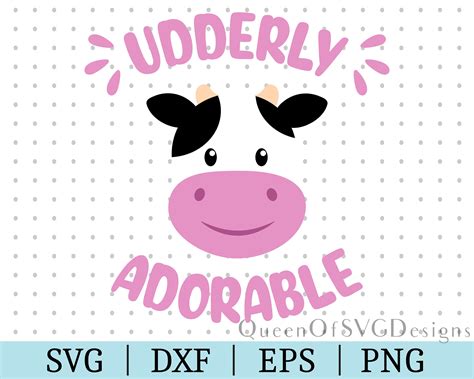
A cow in Quebec, Canada, has formed an unusual maternal bond with a dog, believing the canine to be her calf. The heartwarming interspecies friendship has captured attention online, showcasing the cow’s nurturing behavior towards her unlikely adopted “baby.”
The unlikely friendship between a cow and a dog at a farm in Quebec has gone viral, charming audiences with its display of interspecies affection. The cow, seemingly convinced the dog is her calf, exhibits maternal behaviors, including nuzzling, grooming, and attentively watching over her canine companion. This heartwarming story underscores the capacity for animals to form complex social bonds, even across species lines.
According to the owners of the farm, the cow began displaying maternal instincts towards the dog shortly after the dog’s arrival. The cow’s natural maternal drive, combined with the dog’s playful and affectionate nature, created a unique dynamic that quickly blossomed into a deep bond. The owners have documented the pair’s interactions, sharing videos and photos on social media platforms, where they have garnered widespread attention and positive reactions. “It was just incredible to see how she immediately took to him,” one of the owners shared. “She started treating him like he was her own calf, always wanting to be near him and protect him.”
The phenomenon of interspecies bonding is not entirely uncommon, particularly in domesticated animals who frequently interact with other species. However, the intensity and consistency of the cow’s maternal behavior towards the dog are notable. Experts suggest that the cow’s strong maternal instincts, possibly heightened by a previous loss or lack of a calf, may have contributed to her adopting the dog as a surrogate offspring. Additionally, the dog’s receptive and affectionate demeanor likely reinforced the bond, creating a mutually beneficial relationship.
The daily life of the cow and her canine companion is filled with endearing interactions. The cow is often seen gently nudging the dog with her nose, grooming him with her tongue, and standing guard while the dog naps. The dog, in turn, appears to enjoy the cow’s attention, often snuggling up to her for warmth and companionship. The pair spend much of their time together in the pasture, exploring the surroundings and engaging in playful antics. This unique bond has not only brought joy to the farm owners but has also highlighted the emotional intelligence and social complexity of animals.
This heartwarming story serves as a reminder of the interconnectedness of life and the capacity for empathy and compassion that exists across species. It challenges preconceived notions about animal behavior and highlights the importance of providing animals with opportunities to form social bonds and express their natural instincts. The cow and her dog companion have become ambassadors for interspecies harmony, inspiring others to appreciate the beauty and complexity of the animal kingdom.
The owners plan to continue documenting the pair’s journey, sharing their heartwarming story with the world. They hope that their story will encourage others to treat animals with kindness and respect, recognizing their capacity for love, friendship, and emotional connection. The cow and her dog companion have undoubtedly left an indelible mark on the hearts of those who have witnessed their unique bond, serving as a testament to the power of love and connection in the animal kingdom.
Detailed Analysis and Background Information
To fully appreciate the significance of this heartwarming story, it is essential to delve into the underlying factors that contribute to interspecies bonding, the psychology of animal behavior, and the role of human intervention in shaping these relationships.
Interspecies Bonding: A Scientific Perspective
Interspecies bonding, also known as cross-species bonding, refers to the formation of close social relationships between animals of different species. While these bonds are often observed in domesticated animals, they can also occur in the wild, albeit less frequently. Several factors can contribute to interspecies bonding, including:
-
Early Socialization: Animals that are raised together from a young age are more likely to form strong bonds, regardless of their species. Early exposure to different species can help to break down natural barriers and foster a sense of familiarity and acceptance.
-
Shared Experiences: Animals that share common experiences, such as living in the same environment, participating in the same activities, or facing the same challenges, are more likely to bond with one another. Shared experiences can create a sense of camaraderie and mutual support.
-
Hormonal Influences: Hormones play a crucial role in shaping animal behavior, including social bonding. For example, oxytocin, often referred to as the “love hormone,” is released during positive social interactions and can promote feelings of attachment and bonding.
-
Instinctual Drives: In some cases, interspecies bonding may be driven by instinctual behaviors, such as maternal care or social affiliation. For example, a female animal that has lost her offspring may adopt a young animal of another species as a surrogate offspring, driven by her strong maternal instincts.
Animal Psychology and Behavior
Understanding animal psychology and behavior is essential for comprehending the dynamics of interspecies bonding. Animals, like humans, have complex emotions, social structures, and communication systems. They are capable of forming deep attachments, experiencing empathy, and engaging in prosocial behaviors.
-
Emotional Intelligence: Animals possess a wide range of emotions, including joy, sadness, fear, anger, and love. They are also capable of recognizing and responding to the emotions of others, demonstrating a degree of emotional intelligence.
-
Social Structures: Many animal species live in complex social groups with established hierarchies, roles, and relationships. These social structures provide animals with a sense of belonging, security, and support.
-
Communication: Animals communicate with one another through a variety of means, including vocalizations, body language, facial expressions, and scent marking. Effective communication is essential for maintaining social cohesion and resolving conflicts.
Human Intervention and Its Impact
Human intervention can play a significant role in shaping interspecies relationships. Domestication, selective breeding, and changes in animal husbandry practices can all influence the likelihood of interspecies bonding.
-
Domestication: Domestication has altered the behavior and social structures of many animal species, making them more tolerant of human interaction and more likely to form bonds with other domesticated animals.
-
Selective Breeding: Selective breeding can be used to enhance certain traits, such as docility, sociability, and tolerance of other species. This can increase the likelihood of interspecies bonding.
-
Animal Husbandry Practices: Animal husbandry practices, such as providing animals with opportunities for social interaction and enrichment, can promote positive social relationships and reduce the risk of aggression or conflict.
In the case of the cow and the dog, the farm environment likely played a crucial role in facilitating their bond. The cow’s natural maternal instincts, combined with the dog’s playful and affectionate nature, created a unique dynamic that was nurtured by the farm owners. The owners’ willingness to allow the pair to interact freely and express their natural behaviors fostered a strong and lasting bond.
Ethical Considerations
While interspecies bonding can be heartwarming and beneficial for the animals involved, it is essential to consider the ethical implications of these relationships.
-
Animal Welfare: The primary concern should always be the welfare of the animals involved. Interspecies bonds should not be forced or encouraged if they cause stress, anxiety, or harm to any of the animals involved.
-
Natural Behaviors: It is important to allow animals to express their natural behaviors, even if those behaviors are not always compatible with interspecies bonding. For example, a predator and prey should not be forced to live in close proximity, as this can cause stress and anxiety for the prey animal.
-
Human Interference: Human interference in animal relationships should be minimized. While it is acceptable to provide animals with opportunities for social interaction and enrichment, humans should avoid interfering in their natural bonding processes.
Lessons Learned from the Cow and Dog Friendship
The story of the cow and the dog offers valuable lessons about animal behavior, interspecies relationships, and the importance of empathy and compassion.
-
Animals are Capable of Complex Emotions: The cow’s maternal behavior towards the dog demonstrates that animals are capable of experiencing complex emotions, such as love, empathy, and compassion.
-
Interspecies Bonds are Possible: The friendship between the cow and the dog shows that animals of different species can form strong and lasting bonds, defying preconceived notions about animal behavior.
-
Human Intervention Can Shape Animal Relationships: The farm owners’ willingness to allow the cow and the dog to interact freely fostered a strong and lasting bond, highlighting the role of human intervention in shaping animal relationships.
-
Empathy and Compassion are Essential: The story of the cow and the dog encourages us to treat animals with kindness, respect, and empathy, recognizing their capacity for love, friendship, and emotional connection.
The Power of Social Media
The viral nature of the cow and dog’s story underscores the power of social media to connect people with heartwarming stories and promote positive messages. The sharing of videos and photos of the pair’s interactions has allowed audiences around the world to witness their unique bond, fostering a sense of wonder and appreciation for the animal kingdom. Social media can be a powerful tool for raising awareness about animal welfare, promoting ethical treatment of animals, and inspiring others to act with kindness and compassion.
Conclusion
The tale of the cow who believes a dog is her baby is more than just a cute anecdote; it is a testament to the complex social and emotional lives of animals. This interspecies friendship challenges our assumptions about animal behavior and highlights the capacity for empathy and connection that exists across species lines. By sharing their story, the farm owners have not only brought joy to countless individuals but have also contributed to a greater understanding and appreciation of the animal kingdom. The cow and her dog companion serve as ambassadors for interspecies harmony, reminding us of the interconnectedness of life and the importance of treating all creatures with kindness and respect. Their heartwarming bond is a powerful reminder that love knows no boundaries and that even the most unlikely of friendships can flourish in the most unexpected of places. This extraordinary connection exemplifies the profound emotional capabilities of animals and enriches our understanding of the diverse tapestry of life on Earth. Their story continues to resonate, fostering a deeper respect for the sentience and social complexities of the animal world. As we witness their bond, we are reminded of the responsibility we share to protect and nurture the well-being of all creatures, fostering environments where such extraordinary connections can thrive. The ongoing documentation of their journey allows us to witness the unfolding of a truly remarkable relationship, one that inspires us to see the world through the eyes of compassion and empathy.
The unwavering bond between the cow and the dog is a powerful narrative that transcends species boundaries, reminding us of the universal language of love and connection that binds all living beings together. Their story serves as a beacon of hope, illuminating the potential for harmony and understanding in a world often divided by differences. As we continue to share their tale, we amplify the message of compassion and inspire others to cultivate a deeper appreciation for the beauty and complexity of the animal kingdom. The viral spread of their heartwarming interactions underscores the innate human desire to connect with stories of love and friendship, particularly those that challenge our preconceived notions about the natural world. The cow and the dog have inadvertently become ambassadors of interspecies understanding, fostering a greater sense of responsibility towards the well-being of all creatures who share our planet. Their legacy will undoubtedly endure, inspiring future generations to embrace the principles of empathy, compassion, and respect for the animal kingdom. The extraordinary bond they share is a testament to the power of love to transcend boundaries and create lasting connections, reminding us that even in the most unexpected of places, the seeds of friendship can blossom and flourish. The ongoing documentation of their journey allows us to witness the unfolding of a truly remarkable relationship, one that inspires us to see the world through the eyes of compassion and empathy. Their heartwarming tale serves as a poignant reminder that the capacity for love and connection knows no bounds, extending beyond the confines of species and cultural differences. As we continue to share their story, we amplify the message of compassion and inspire others to cultivate a deeper appreciation for the beauty and complexity of the animal kingdom. Their legacy will undoubtedly endure, inspiring future generations to embrace the principles of empathy, compassion, and respect for all living beings.
Frequently Asked Questions (FAQ)
1. How did the cow and dog develop such a strong bond?
The cow’s strong maternal instincts, potentially heightened by a lack of a calf or a past loss, combined with the dog’s playful and affectionate nature, led to the cow adopting the dog as a surrogate offspring. Early interaction and constant companionship further solidified their bond. According to the farm owners, “It was just incredible to see how she immediately took to him. She started treating him like he was her own calf, always wanting to be near him and protect him.”
2. Is it common for animals of different species to form such close relationships?
While interspecies bonding is not entirely uncommon, particularly in domesticated animals, the intensity and consistency of the cow’s maternal behavior towards the dog are notable. Several factors contribute to interspecies bonding, including early socialization, shared experiences, hormonal influences, and instinctual drives.
3. What behaviors does the cow exhibit towards the dog?
The cow displays several maternal behaviors towards the dog, including nuzzling, grooming, attentively watching over him, and standing guard while he naps. She is often seen gently nudging the dog with her nose and grooming him with her tongue.
4. What do the farm owners think about this unique bond?
The farm owners are delighted by the relationship between the cow and the dog. They have documented their interactions and shared them on social media, where they have received widespread attention and positive reactions. They believe the story highlights the emotional intelligence and social complexity of animals.
5. What are the ethical considerations of interspecies bonding, and how are the farm owners ensuring the animals’ well-being?
The primary ethical consideration is animal welfare. The farm owners are careful to ensure that the relationship does not cause stress, anxiety, or harm to either animal. They allow the cow and dog to interact freely and express their natural behaviors while monitoring their interactions to ensure their well-being. They do not force the relationship or interfere in their bonding process.









